10 Questions for 'The Settlers' film director Felipe Gálvez Haberle | reviews, news & interviews
10 Questions for 'The Settlers' film director Felipe Gálvez Haberle
10 Questions for 'The Settlers' film director Felipe Gálvez Haberle
Why he made a Western to condemn the Chileans responsible for the Selk'nam genocide
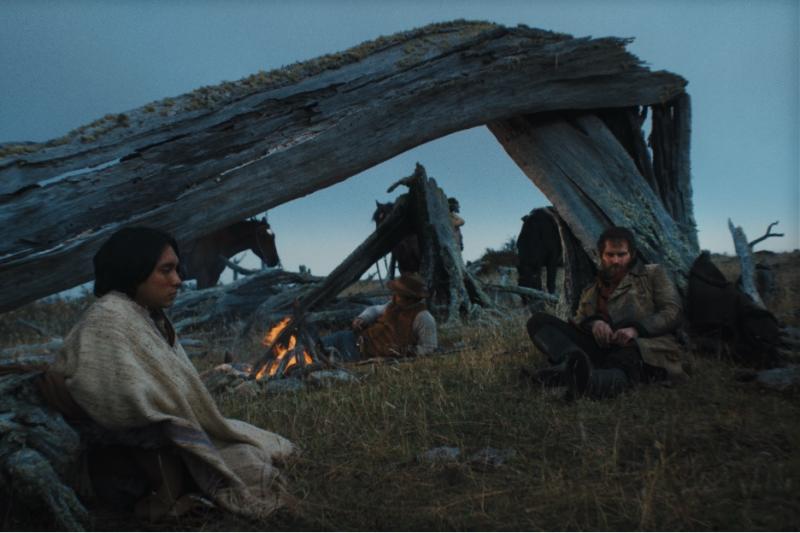
Felipe Gálvez Haberle’s Chilean Western The Settlers traces the roles played in the genocide of the country’s indigenous Selk’nam people by the Spanish businessman José Menéndez (1846-1918) and his brutal Scottish sheep station manager Alexander McLennan (1871-1917).
Longtime film editor Gálvez Haberle’s feature debut as a director self-consciously harnesses the tropes of Hollywood and spaghetti Westerns, as well as heritage dramas in thrall to ruling class opulence, to deconstruct those genres as farragos of lies – cinema’s equivalent of the history “written by the winners”. The Settlers, which Gálvez Halberle co-wrote with Antonia Girardi, might be analogous in its anti-colonialism to Werner Herzog’s Aguirre, Wrath of God (1972) and Lucrecia Martel’s Zama (2017), but it hews closer to Sam Peckinpah’s allegorical Mexican Westerns and Alex Cox’s Walker (1987).
In 1901, the land baron and wool trader Menéndez (Alfredo Castro) dispatches his brutal foreman McLennan (Mark Stanley), still dressed in his scarlet British army tunic, the Texan Comanche killer Bill (Benjamin Westfall), and the young sharpshooter Segundo Molina (Camilo Arancibia), based on a real-life mestizo (mixed-race man), to clear a sheep grazing and trade route to the Pacific. (Pictured below: Felipe Gálvez Haberle)
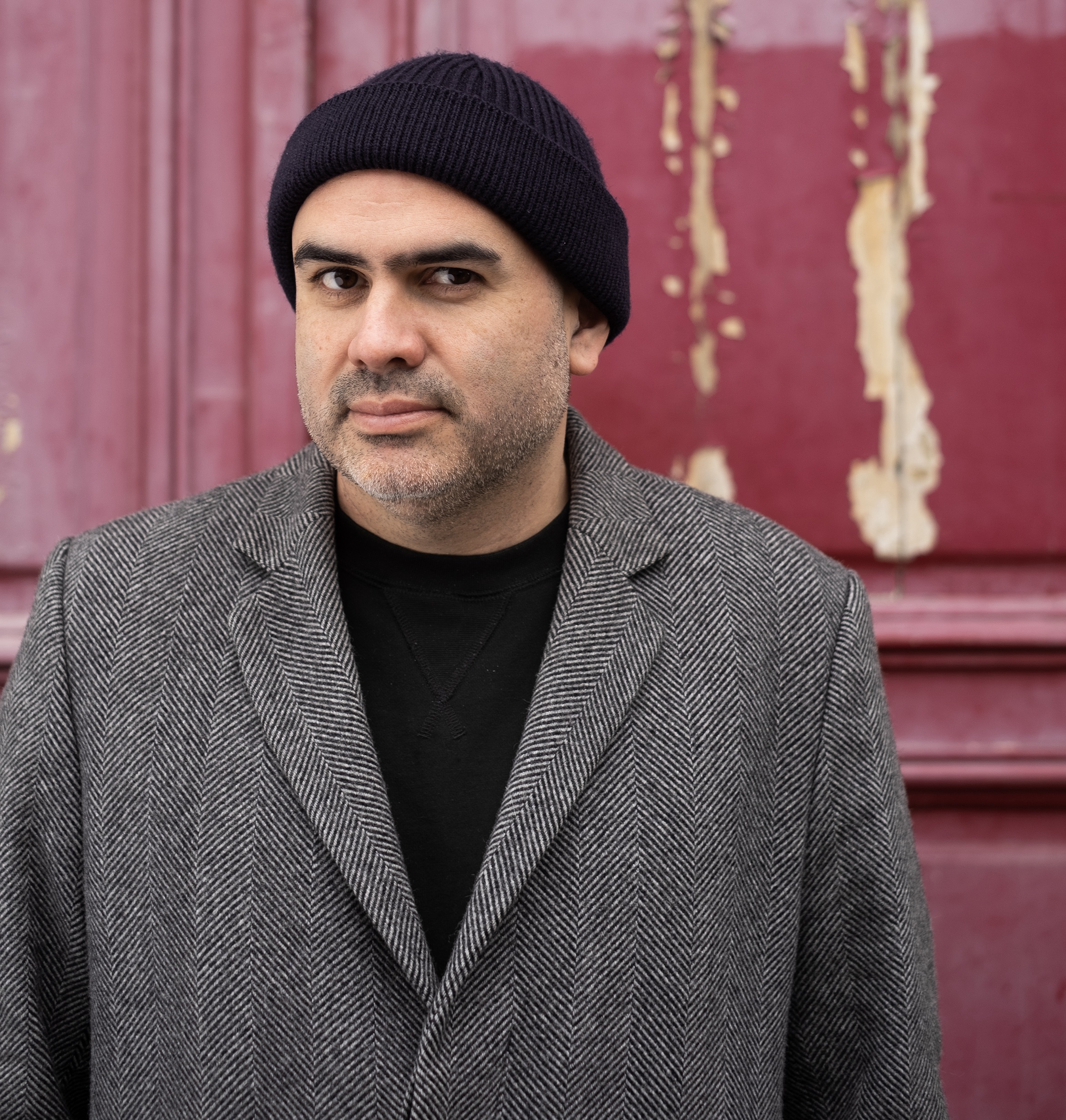 The real Menendez ordered McLennan, his manager across the Magellan Straits on Tierra del Fuego, to exterminate the Selk’nam after they began taking sheep – barbed wire having deprived them of the guanacos they depended on for meat. The specific barbarities that enabled mercenaries like Bill to get paid for presenting severed trophies at market are eerily similar to those committed by Colonel John Chivington’s US cavalrymen during the massacre of Cheyenne and Arapaho people at Sand Creek, Colorado, in November 1864.
The real Menendez ordered McLennan, his manager across the Magellan Straits on Tierra del Fuego, to exterminate the Selk’nam after they began taking sheep – barbed wire having deprived them of the guanacos they depended on for meat. The specific barbarities that enabled mercenaries like Bill to get paid for presenting severed trophies at market are eerily similar to those committed by Colonel John Chivington’s US cavalrymen during the massacre of Cheyenne and Arapaho people at Sand Creek, Colorado, in November 1864.
The film’s protagonist and conscience Segundo (who was conceived, Gálvez Haberle has conjectured, when his Mapuche mother was raped by a Spaniard) endures the hatred of his white comrades on the expedition. As the three advance in fog on a Selk’nam camp, he trains his rifle on Bill, but instead of shooting him ends up completing the carnage, albeit for merciful reasons.
Defenceless victims aside, no one in Gálvez Haberle's Patagonia is guiltless. Played by Adriana Stuven, Menéndez’s daughter Josefina (1874-1955) appears as the chatelaine of his coldly filmed Punta Arenas mansion at the start of the film’s third act, set in 1908. She snarlingly justifies his depredations before the government official, Vicuña (Marcelo Alonso), who has come to interrogate her father. Vicuña himself is little better than an apologist, as he shows when equipped with a movie camera in the final scene. Only one character, the Selk’nam survivor Kiepja (Mishell Guaña), makes a stand for her decimated people, but even she carries the taint of collaboration, as the Paris-based 40-year-old director explained in a recent Zoom interview.
GRAHAM FULLER: The Selk’nam genocide was erased from Chilean history, as was the Pinochet dictatorship. Did you see a connection between these two catastrophes and did that factor into the making of The Settlers.
FELIPE GÁLVEZ HABERLE: Yes, I saw a link straight away. The Chilean government actually recognised the Selk’nam genocide five months ago, so it now forms an official part of Chilean history, whereas there continues to be obfuscation around the dictatorship. People don’t use the words coup d’etat. They kind of try to lighten the tone by using synonyms. They refer to the dictatorship as a military government, for instance. So for me the motivation was to look at what happens when these episodes of our history are erased.
What prompted you to make The Settlers originally and why did it take nine years?
The nine year period was mainly waiting for funding to come in after the script was written. It was my first feature, and it was ambitious in terms of budget for a Chilean film. The inspiration for it was the photographs taken during the [1886] expedition [to Tierra del Fuego] led by Julius Popper [1857-93; the Romanian engineer and gold-seeker who was a prime instigator of the genocide]. These photos show his men hunting the Selk’nam people. When we set out to do the film, I said, “I want to start with a killing scene, then we'll work out what happens before and what happens after.” (Pictured below: Alfredo Castro as Menéndez)
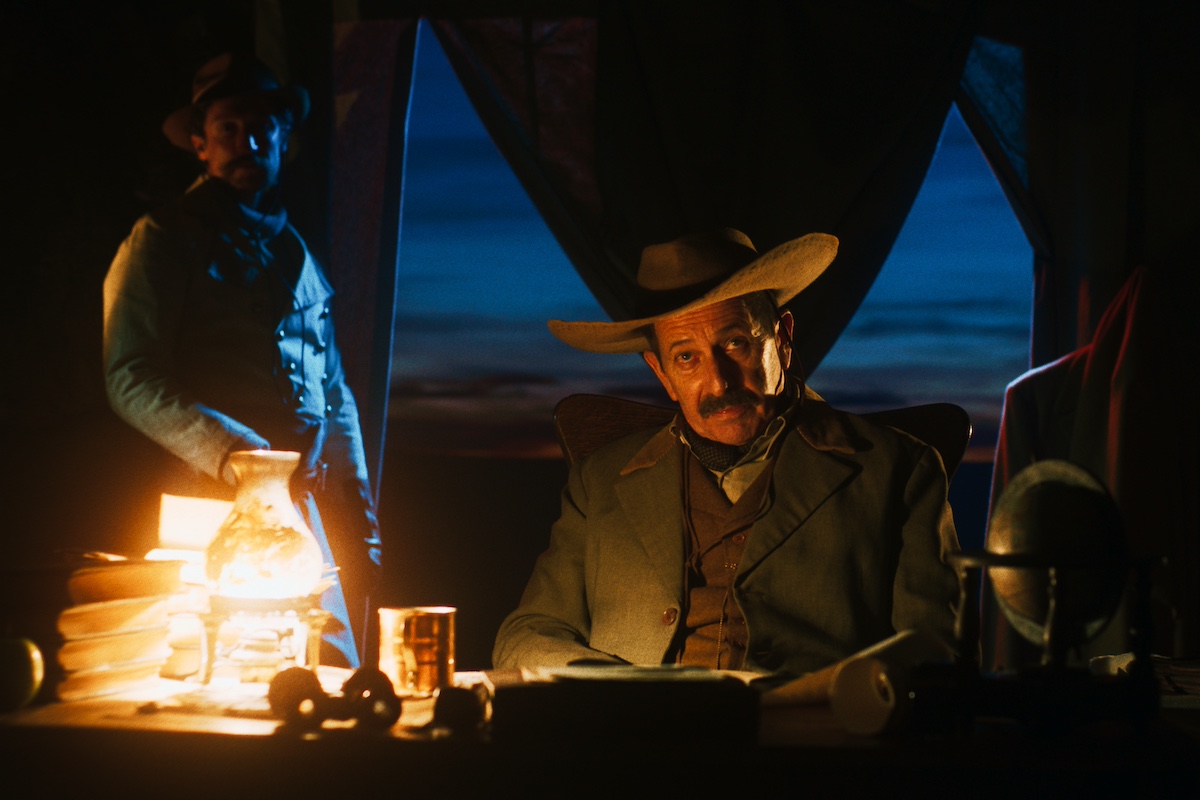 Did you consciously make The Settlers a Western so that international audiences would identify the Selk’nam genocide with the Native American genocide in the north?
Did you consciously make The Settlers a Western so that international audiences would identify the Selk’nam genocide with the Native American genocide in the north?
I was critiquing the landowner class in Chile and also the church and the state. But, as a cinephile, I wanted to put a critical lens on film itself, to look at the role it played in colonialism in the 20th century. I thought it would have seemed cynical not to question it. I realised that the Western was initially a propaganda genre that became a genre to entertain. So the idea was to dive into the Western, appropriate it, and use it to make a critical reflection on the role of cinema.
What specific Westerns influenced you?
I saw John Ford’s The Searchers {1956] as a mix of Westerns and epic war films, and there’s some influence there in the scale of the shots I used. Also the [John Wayne character Ethan Edwards’] discrimination against mixed-race people [Jeffrey Hunter’s Martin Pawley is one-eighth Comanche] in The Searchers is echoed in McLennan and Bill’s discrimination against the mestizo Segundo. The Settlers also shares with The Searchers the idea of characters who have lived through a war, whose heads are stuck in the past, meaning they live perpetually in the horror of that time.
Segundo is initially an unwilling observer of McLennan and Bill's atrocities. Yet you implicate him in the violence against the Selk’nam. Were mestizos involved in the slaughter?
Absolutely. They were a cheap source of labour in South America at the time. This is an intimate part of Chile's history because 75 per cent of us are mestizos. An important reflection for me was that no one shown in this film is innocent. We see the conflicts between the three men – the Scot McLennan, the American Bill, and the mestizo Segundo. But the film is fundamentally about the time when Chileans – not foreigners – colonised the land, which is why the Chilean state features in it. (Pictured below: Camilo Arancibia as Segundo)
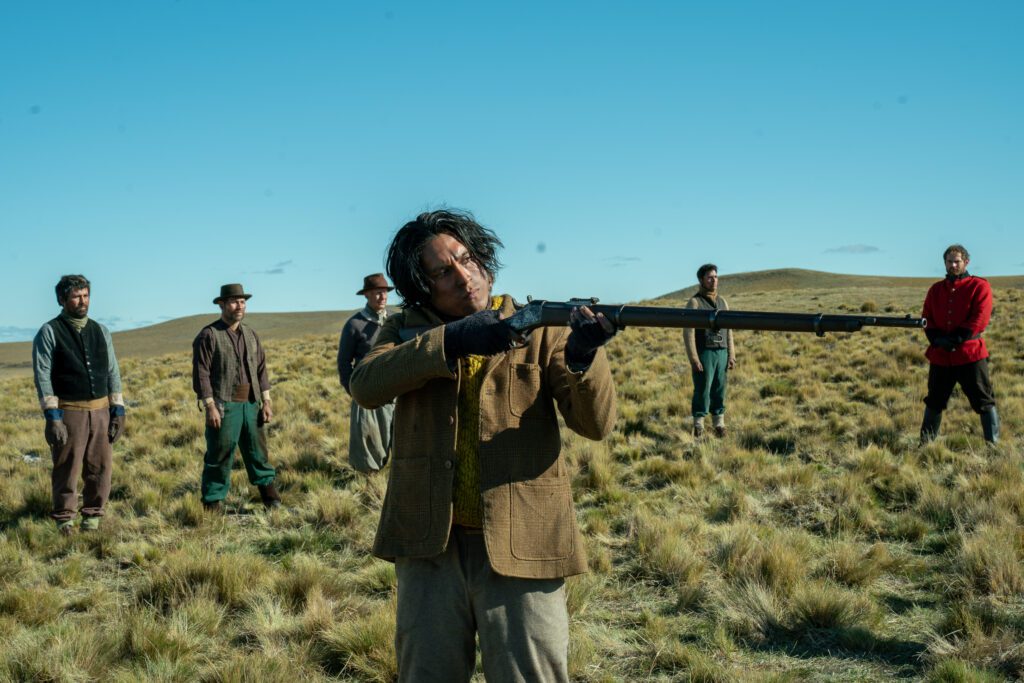 There are many different indigenous tribes in Chile that have had hundreds and hundreds of conflicts between themselves. If indigenous people are having wars among themselves, why would mestizos not do the same thing? Just because you're the same colour as someone, it doesn't mean that you won't kill them, right? You can put the question another way. Why would a Catholic person kill a Jewish person? Why would a German kill someone from another European country? It is just part of human nature. At the same time, I wanted to show the struggle Segundo had in actually carrying out those killings.
There are many different indigenous tribes in Chile that have had hundreds and hundreds of conflicts between themselves. If indigenous people are having wars among themselves, why would mestizos not do the same thing? Just because you're the same colour as someone, it doesn't mean that you won't kill them, right? You can put the question another way. Why would a Catholic person kill a Jewish person? Why would a German kill someone from another European country? It is just part of human nature. At the same time, I wanted to show the struggle Segundo had in actually carrying out those killings.
It’s also important to mention Kiepja, the translator [for Colonel Martin. a British freebooter played by Sam Spruell]. She’s an archetype based on La Malinche, the translator for Hernán Cortés [conqueror of the Aztec Empire in Mexico in 1521] and her collaboration was a means of survival, which is a recurrent theme in Latin American history.
After the massacre of the Selk’nam people in the film, McLennan orders Segundo to follow him and Bill in raping a young woman who survived it. Segundo strangles her. Is that to spare her further misery?
Yes. Until that point in the film, he hadn't actually killed anyone. He helps this woman to die, yet it’s the start of his journey into barbarity. The film doesn't spare him the fact that in the six years following this incident he will kill many more people. He has this dark future. (Pictured below: McLennan, Bill, and Segundo are captured by Colonel Martin and his men)
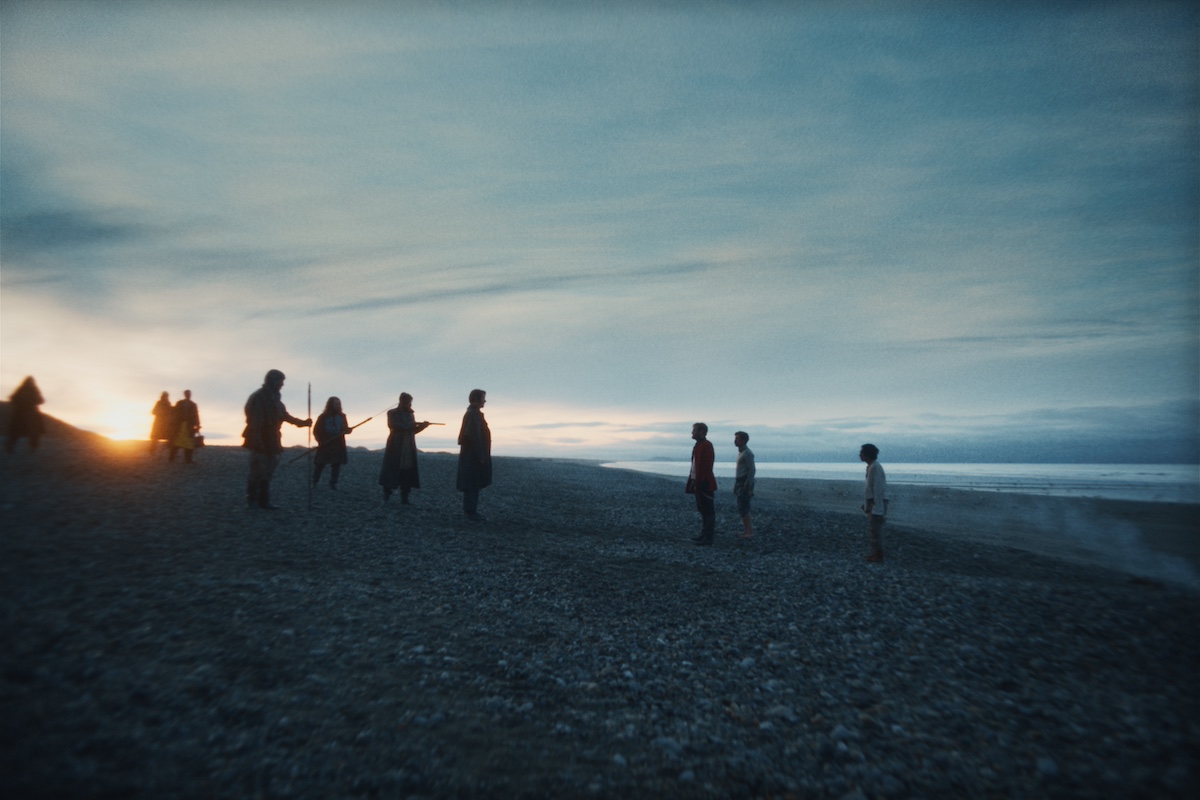 The Patagonia landscape was handsomely filmed by your cinematographer, Simone D’Arcangelo. Some of the compositions make dazzling use of colour, yellow and blue especially. Even the fog in which you shroud the massacre is aesthetically pleasing. How do you reconcile the idea of rendering such horrific events so beautifully?
The Patagonia landscape was handsomely filmed by your cinematographer, Simone D’Arcangelo. Some of the compositions make dazzling use of colour, yellow and blue especially. Even the fog in which you shroud the massacre is aesthetically pleasing. How do you reconcile the idea of rendering such horrific events so beautifully?
This is a question that should be put to all directors of Westerns. The genre is replete with beautiful cinematography. There are some beautiful shots in The Searchers. I’m always taken aback when I get this question, as if The Settlers is unique in being horrible and having graphic beauty. The point I wanted to make is that history has been distorted, so the film should reflect this distortion. We didn't want to make a film that seemed realistic or film it in black and white with a documentary approach. I wanted the imagery itself to feel uncanny, to be clear it is a fiction with chromatic distortion. The lenses themselves were distorted.
When you make a Western without heroes, you need other devices to maintain the audience's attention. So you focus on the landscapes, the animals, be what it may. They are real, whereas the rest of it was clearly fiction. But it was important to me not to overly beautify the landscape, so that it’s seen not as a kind of postcard but as a character in itself. (Pictured below: Mishell Guaña as Kiepja]
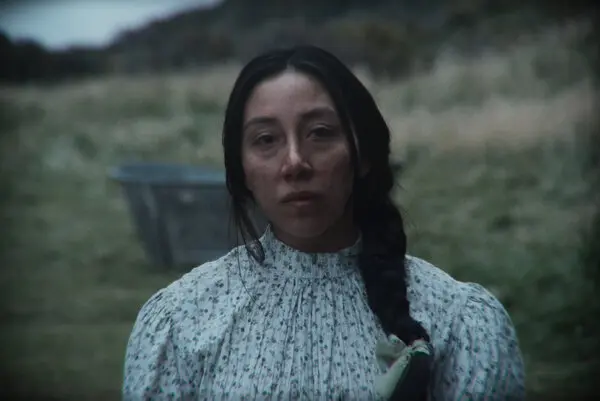 A lullaby bridges the last scene involving McLennan and the scene set in Menéndez's Punta Arenas mansion seven years later. A cut reveals that it's being sung by Menendez’s daughter Josefina and her young daughters. They're performing it for Menendez and a priest [Luis Machín], who subsequently utters biblical bromides when the visiting government official Vicuña interrogates Menéndez and Josefina about MacLennan’s prosecution of the genocide. The lullaby in question is “All the Pretty Little Horses”, which recalls Cormac McCarthy’s novel All the Pretty Horses and, by extension, his Blood Meridian, which portrays a ferocious band of scalphunters in the American southwest and Mexico. Did it directly influence The Settlers?
A lullaby bridges the last scene involving McLennan and the scene set in Menéndez's Punta Arenas mansion seven years later. A cut reveals that it's being sung by Menendez’s daughter Josefina and her young daughters. They're performing it for Menendez and a priest [Luis Machín], who subsequently utters biblical bromides when the visiting government official Vicuña interrogates Menéndez and Josefina about MacLennan’s prosecution of the genocide. The lullaby in question is “All the Pretty Little Horses”, which recalls Cormac McCarthy’s novel All the Pretty Horses and, by extension, his Blood Meridian, which portrays a ferocious band of scalphunters in the American southwest and Mexico. Did it directly influence The Settlers?
In my research, I stumbled on Blood Meridian and I did see a similarity. I wanted the film to be shot from the perspective of the perpetrators, so there's a parallel to be made between the character of the Judge in Blood Meridian and McLennan in The Settlers – perhaps there was some inspiration there. But I think the main element that comes from Blood Meridian, if there is any, is the cruelty.
At the end of the film, Kiepja, now known as Rosa, refuses to collude in the making of the ethnographic documentary that Vicuña is staging to demonstrate the willing assimilation of indigenous people into the modern Chilean way of life. If not a heroic gesture, it is a defiant one.
For me, what that final scene shows is a suggestion of resilience and resistance. It doesn’t make her the hero of the film, but it’s perhaps a seed of something. It’s the beginnings of this rage that would emerge many years later in Chile and that we empathise with and relate to.
Explore topics
Share this article
The future of Arts Journalism
You can stop theartsdesk.com closing!
We urgently need financing to survive. Our fundraising drive has thus far raised £49,000 but we need to reach £100,000 or we will be forced to close. Please contribute here: https://gofund.me/c3f6033d
And if you can forward this information to anyone who might assist, we’d be grateful.

Subscribe to theartsdesk.com
Thank you for continuing to read our work on theartsdesk.com. For unlimited access to every article in its entirety, including our archive of more than 15,000 pieces, we're asking for £5 per month or £40 per year. We feel it's a very good deal, and hope you do too.
To take a subscription now simply click here.
And if you're looking for that extra gift for a friend or family member, why not treat them to a theartsdesk.com gift subscription?
more Film
 A House of Dynamite review - the final countdown
Kathryn Bigelow's cautionary tale sets the nuclear clock ticking again
A House of Dynamite review - the final countdown
Kathryn Bigelow's cautionary tale sets the nuclear clock ticking again
 theartsdesk Q&A: Idris Elba on playing a US President faced with a missile crisis in 'A House of Dynamite'
The star talks about Presidential decision-making when millions of lives are imperilled
theartsdesk Q&A: Idris Elba on playing a US President faced with a missile crisis in 'A House of Dynamite'
The star talks about Presidential decision-making when millions of lives are imperilled
 Urchin review - superb homeless drama
Frank Dillane gives a star-making turn in Harris Dickinson’s impressive directorial debut
Urchin review - superb homeless drama
Frank Dillane gives a star-making turn in Harris Dickinson’s impressive directorial debut
 Mr Blake at Your Service review - John Malkovich in unlikely role as an English butler
Weird comedy directed by novelist Gilles Legardinier
Mr Blake at Your Service review - John Malkovich in unlikely role as an English butler
Weird comedy directed by novelist Gilles Legardinier
 Don't Let's Go to the Dogs Tonight review - vivid adaptation of a memoir about a Rhodesian childhood
Embeth Davidtz delivers an impressive directing debut and an exceptional child star
Don't Let's Go to the Dogs Tonight review - vivid adaptation of a memoir about a Rhodesian childhood
Embeth Davidtz delivers an impressive directing debut and an exceptional child star
 One Battle After Another review - Paul Thomas Anderson satirises America's culture wars
Leonardo DiCaprio, Teyana Taylor, and Sean Penn star in a rollercoasting political thriller
One Battle After Another review - Paul Thomas Anderson satirises America's culture wars
Leonardo DiCaprio, Teyana Taylor, and Sean Penn star in a rollercoasting political thriller
 Steve review - educator in crisis
Cillian Murphy excels as a troubled headmaster working with delinquent boys
Steve review - educator in crisis
Cillian Murphy excels as a troubled headmaster working with delinquent boys
 Can I get a Witness? review - time to die before you get old
Ann Marie Fleming directs Sandra Oh in dystopian fantasy that fails to ignite
Can I get a Witness? review - time to die before you get old
Ann Marie Fleming directs Sandra Oh in dystopian fantasy that fails to ignite
 Happyend review - the kids are never alright
In this futuristic blackboard jungle everything is a bit too manicured
Happyend review - the kids are never alright
In this futuristic blackboard jungle everything is a bit too manicured
 Robert Redford (1936-2025)
The star was more admired within the screen trade than by the critics
Robert Redford (1936-2025)
The star was more admired within the screen trade than by the critics

Add comment